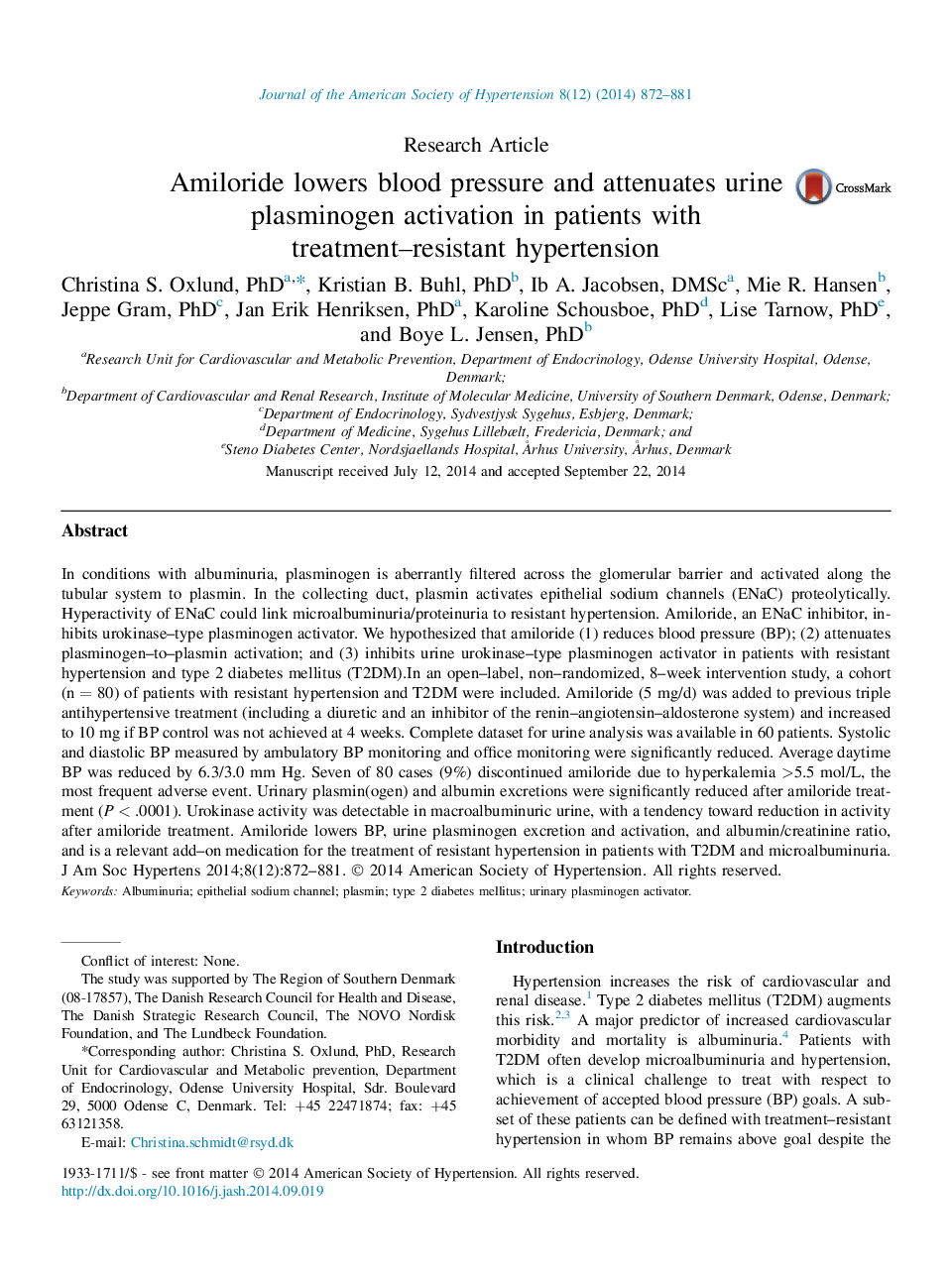| Article ID | Journal | Published Year | Pages | File Type |
|---|---|---|---|---|
| 2956427 | Journal of the American Society of Hypertension | 2014 | 10 Pages |
•Amiloride lowers blood pressure.•Amiloride lowers urine plasminogen excretion and activation.•Amiloride lowers albumin/creatinine ratio in patients with hypertension and albuminuria.
In conditions with albuminuria, plasminogen is aberrantly filtered across the glomerular barrier and activated along the tubular system to plasmin. In the collecting duct, plasmin activates epithelial sodium channels (ENaC) proteolytically. Hyperactivity of ENaC could link microalbuminuria/proteinuria to resistant hypertension. Amiloride, an ENaC inhibitor, inhibits urokinase–type plasminogen activator. We hypothesized that amiloride (1) reduces blood pressure (BP); (2) attenuates plasminogen–to–plasmin activation; and (3) inhibits urine urokinase–type plasminogen activator in patients with resistant hypertension and type 2 diabetes mellitus (T2DM).In an open–label, non–randomized, 8–week intervention study, a cohort (n = 80) of patients with resistant hypertension and T2DM were included. Amiloride (5 mg/d) was added to previous triple antihypertensive treatment (including a diuretic and an inhibitor of the renin–angiotensin–aldosterone system) and increased to 10 mg if BP control was not achieved at 4 weeks. Complete dataset for urine analysis was available in 60 patients. Systolic and diastolic BP measured by ambulatory BP monitoring and office monitoring were significantly reduced. Average daytime BP was reduced by 6.3/3.0 mm Hg. Seven of 80 cases (9%) discontinued amiloride due to hyperkalemia >5.5 mol/L, the most frequent adverse event. Urinary plasmin(ogen) and albumin excretions were significantly reduced after amiloride treatment (P < .0001). Urokinase activity was detectable in macroalbuminuric urine, with a tendency toward reduction in activity after amiloride treatment. Amiloride lowers BP, urine plasminogen excretion and activation, and albumin/creatinine ratio, and is a relevant add–on medication for the treatment of resistant hypertension in patients with T2DM and microalbuminuria.
